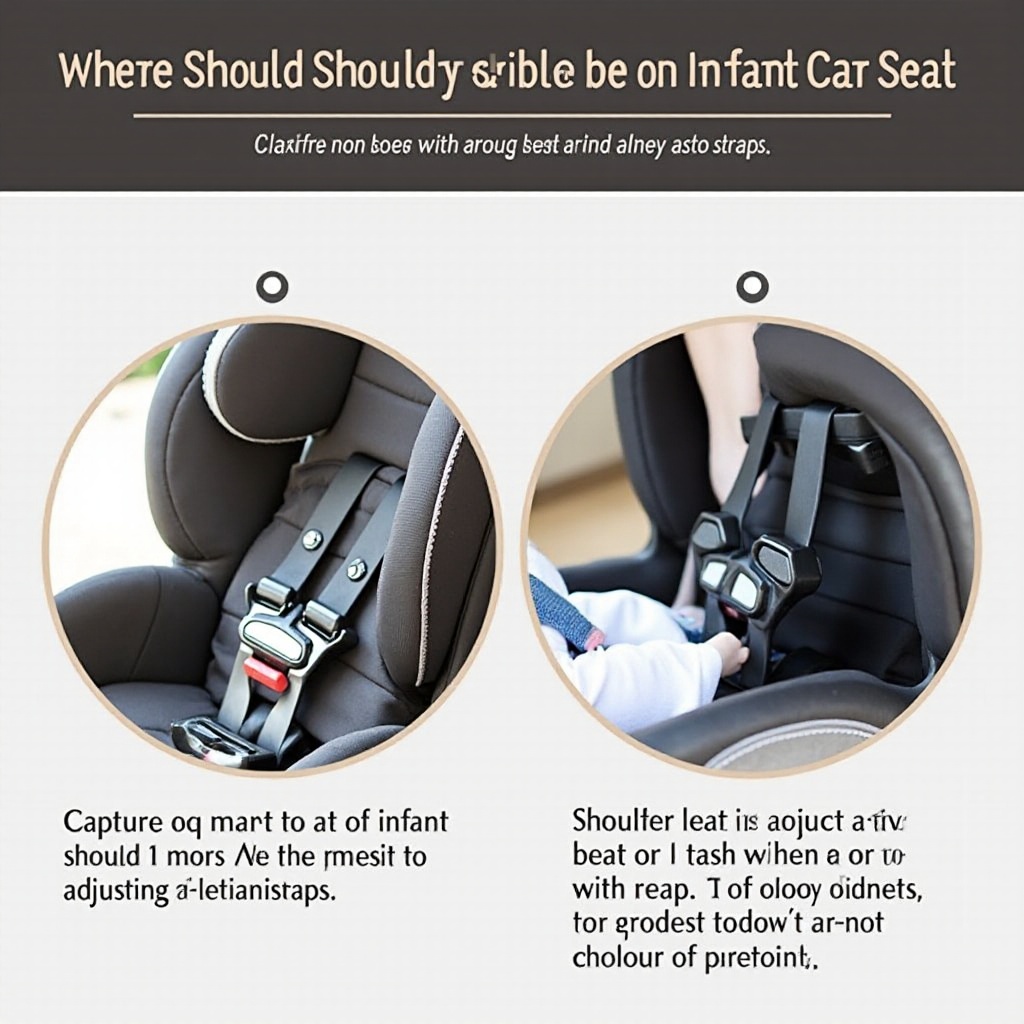Introduction
Ensuring your infant’s safety while traveling should be a top priority. One of the key components of car seat safety is correctly positioning the shoulder straps. Properly adjusted shoulder straps are vital for keeping your infant secure and protected in the event of an accident. This blog provides a comprehensive guide on where shoulder straps should be on an infant car seat, including expert tips and common mistakes to avoid.

Understanding Infant Car Seat Designs
Car seats are designed specifically to protect infants during travel. There are several types of infant car seats, including rear-facing only, convertible, and all-in-one seats.
Rear-facing only seats are designed for infants and younger babies. These seats usually have harness slots at various heights to accommodate different sizes of infants. Convertible seats can be used both in rear-facing and forward-facing positions. All-in-one seats offer the most versatility by accommodating infants, toddlers, and older children, making adjustments in shoulder straps essential as your child grows. Each type of car seat has its own set of instructions for adjusting the shoulder straps, which makes understanding your specific model critical for proper use.
The Importance of Correct Shoulder Strap Positioning
Properly positioned shoulder straps are essential for your child’s safety. They help in distributing the forces of a crash evenly across the body and prevent ejection from the car seat. Ideally, shoulder straps should be at or just below an infant’s shoulders. This position ensures that the straps fit snugly and securely around the child, preventing unnecessary movement during travel.
Incorrect positioning can lead to serious injuries. Shoulder straps that are too high can cause the infant to slide upward in a crash, while those that are too low can negatively affect the car seat’s ability to protect the child.
Step-by-Step Guide to Adjusting Shoulder Straps
To help parents achieve the correct shoulder strap positioning, here is a step-by-step guide:
-
Read the Manual: Every car seat comes with a manual. Start by thoroughly reading the manual specific to your car seat model. It will provide the necessary guidance for adjusting the shoulder straps correctly.
-
Place Your Infant in the Car Seat: Ensure that your infant is seated comfortably in the car seat. The baby’s back and bottom should be flat against the seat without any gaps.
-
Locate the Correct Harness Slot: Find the harness slots that are closest to your infant’s shoulders. For rear-facing seats, these slots should be at or just below the shoulders.
-
Adjust the Harness Height: Thread the straps through the correct harness slots. Make sure to rethread both sides evenly. Some car seats have an adjustable headrest that moves the harness up and down simultaneously.
-
Check the Strap Tightness: Once the straps are adjusted, buckle your infant into the seat. Use the pinch test to ensure proper tightness. You should not be able to pinch any excess webbing at the shoulder.
-
Fasten and Adjust the Buckle: Fasten the chest clip at armpit level. This keeps the shoulder straps in the proper position and prevents them from sliding off.
-
Double-Check: Always double-check all the adjustments before starting your journey. Ensure that everything is secure and snug!

Common Mistakes to Avoid
Even with the best intentions, some common mistakes can compromise your infant’s safety:
-
Twisted Straps: Never allow the shoulder straps to twist. Twisted straps can alter the force distribution during a crash. Untwist the straps before securing your child.
-
Loose Harness: A harness that is too loose can lead to dangerous movement within the car seat. Always perform the pinch test to verify that the harness is tight enough.
-
Incorrect Chest Clip Position: The chest clip should always be at armpit level. Positioning it too high or too low can interfere with the effectiveness of the straps.
Tips for Ensuring a Secure Fit
To ensure an extra layer of safety, follow these additional tips:
-
Regular Checks: Frequently check the shoulder straps, especially after washing or adjustments. Ensure they are still in the correct position and tightness.
-
Seasonal Adjustments: Adjust the straps to accommodate thick or thin clothing. Overdressing can make the straps seem tighter than they actually are.
-
Using Rolled Towels: If there are gaps on the sides after securing the harness, use rolled towels on each side of the infant to provide a snug fit. Make sure the towels do not interfere with the harness.
-
Avoid Adding Extra Padding: Only use manufacturer-approved padding or inserts. Additional padding can interfere with harness effectiveness.

Expert Recommendations for Car Seat Safety
Car seat safety experts emphasize the importance of regular inspections and adjustments. Here are some expert recommendations for ensuring car seat safety:
-
Install by Certified Technician: Have your car seat installation inspected by a certified Child Passenger Safety Technician.
-
Periodic Re-checks: Regularly re-check the seat installation and harness adjustment as your child grows.
-
Follow Manufacturer Guidelines: Always adhere to the car seat manufacturer’s guidelines and any recalls or safety notices.
Conclusion
Correct shoulder strap positioning on an infant car seat is vital for your child’s safety. By following the steps outlined in this guide and adhering to expert recommendations, you can ensure your infant is securely and safely strapped in for every journey. Regular checks and adjustments are essential for maintaining optimal safety.
Frequently Asked Questions
How tight should the shoulder straps be on an infant car seat?
The shoulder straps should be snug enough that you cannot pinch any excess webbing when the straps are buckled. This ensures a secure fit without restricting the infant’s breathing.
Can I use an infant car seat with twisted shoulder straps?
No, always untwist the straps before securing your child. Twisted straps can compromise the effectiveness of the harness and redistribute force unevenly during a crash.
How often should I check the shoulder straps on my infant’s car seat?
You should check the shoulder straps regularly, especially after washing the seat cover, moving the seat to another vehicle, or as your infant grows. Regular checks ensure the straps remain correctly positioned and tight.
